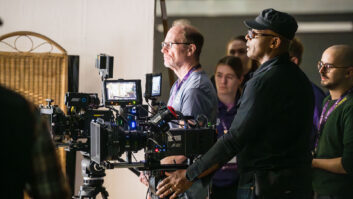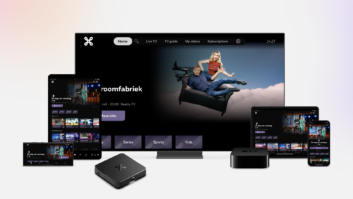
By Luca Marinoni, head of sport and live events, RRsat Europe
A lot can change in four years, particularly in the world of sport. 2010 saw over 20 million British viewers tune in to the World Cup, with the majority watching it live. This year’s tournament looks to be no different with its popularity only having been increased by a shift in global audience’s viewing habits and mobile’s continuing quest for world domination.
Brazil’s World Cup tournament will be the most accessible and shared ever, driven by mobile apps, social media, and on demand footage – all available anywhere and any time. Football fans are recognised as one of the world’s most passionate audience group and broadcasters are eager to take advantage of the rapid growth in internet-connected mobile devices to engage with viewers.
Whilst the TV is still a focal point for many homes, mobile is a vital channel for sports fans when watching live events. To give you an idea of how much viewing habits have changed, smartphones accounted for just 19 per cent of all mobile sales in 2010, a staggering figure when compared to the one billion shipped just last year.
Mobile and on demand TV services are constantly being redeveloped to capitalise on the opportunities presented by the popularity of sports broadcasting. It is therefore essential that the necessary infrastructures be in place in order to provide an innovative and consistent cross-platform experience.
Sports fans are constantly looking to digest content whilst on the move. Even whilst watching the game, fans are searching for information, facts and replays using second screens. BBC Sport recently revealed that 70 per cent of traffic to its football site during live games comes via mobile devices. It presents an opportunity for those broadcasters who do not own the TV rights to engage with audiences.
Many brands have already jumped on the opportunity presented by mobile viewing with FIFA anticipating its World Cup app will be the most downloaded sports mobile application of all time. It is expected to be downloaded 70 million times, and mean fans never miss a moment of the game.
Another technology set to make an appearance this year is the introduction of 4K, with three matches to be showcased in Ultra HD formats. However, fans will only be able to view the content via a 4K-enabled TV, a factor that is expected to change as the format increases in popularity.
Available to those lucky few who have the right to broadcast the matches is an extra 1,500 hours of content, all of which can be delivered to second screen devices. During the live matches viewers can choose from six camera angles, and up to 24 when watching on demand.
Getting up early to watch the games is no longer the only option in keeping up with the fast-paced news of the World Cup. Whether it’s watching the action first-hand in Rio, or catching up on a match from across the world, viewers everywhere have an infinite amount of content available at their fingertips.







